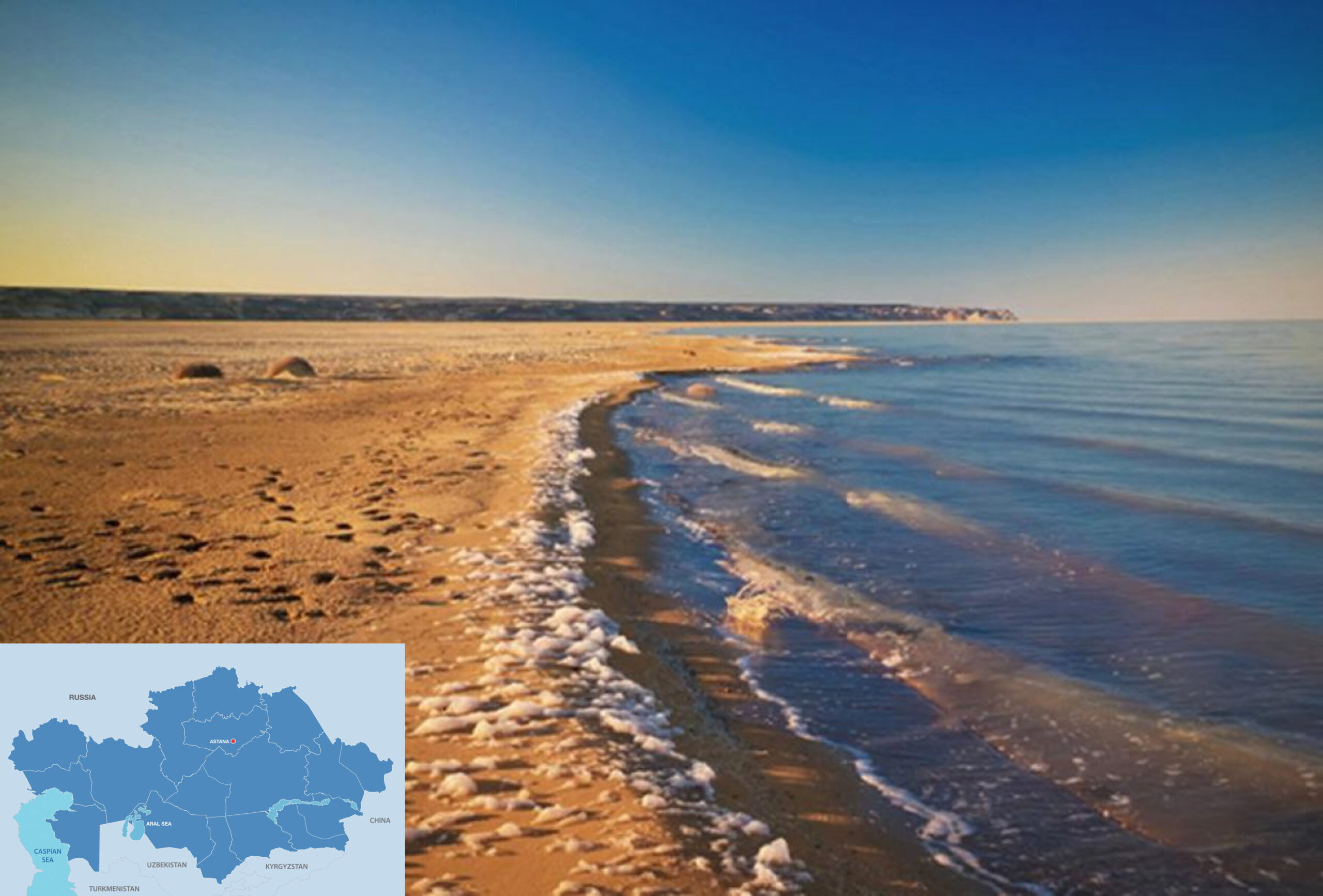Aral Sea: Record Water Inflows and Greening Initiatives Fuel Environmental, Economic Recovery
February 10, 2025
ASTANA — Efforts to restore the Northern Aral Sea have shown significant progress. From October 2024 to January, one billion cubic meters of water were added, exceeding expectations. Ongoing projects, including dam reconstruction and water-saving technologies, boost the sea’s water volume, support fisheries, and revitalize the surrounding environment.

Photo credit: Kazakh Ministry of Ecology . Click to see the map in full size. The map is designed by The Astana Times.
By the end of March, the total volume sent to the sea will reach 1.6 billion cubic meters, owing to agreements with Central Asian countries, reported the Kazakh Ministry of Water Resources and Irrigation on Feb. 10.
The Northern Aral Sea currently holds 22.1 billion cubic meters of water, an increase from 18.9 billion cubic meters at the beginning of 2022. This volume is expected to rise to 23.4 billion cubic meters by the end of this year. The sea’s area has also expanded to 3,065 square kilometers, a growth of 111 square kilometers since 2022.
This rise in volume and area has improved water quality, reduced mineralization, and revitalized fish populations, now supporting 22 species. Fisheries are thriving, with an annual catch of 8,000 tons.
The project to preserve the Kokaral Dam and restore the Syrdarya River delta is nearing completion. Significant progress includes the reconstruction of dams and canals, and the Kokaral Dam is set to be fully restored by the end of the year. This project will help preserve the Northern Aral Sea and lower water salinity.
In the Kyzylorda Region, the introduction of water-saving technologies, such as leveling rice fields with laser planners, has saved around 200 million cubic meters of water, which were redirected to the sea.
The improved techniques have also boosted rice yields from 40-55 cents per hectare to 70-80 cents per hectare. To encourage further adoption of these technologies, subsidies for infrastructure and systems have been increased, with some subsidies covering up to 85% of irrigation water costs.
Efforts to green the dried-up areas of the Aral Sea continue, with 4.4 million seedlings planted so far. Between 2021 and 2024, some 475,000 hectares were reforested, and 428,000 hectares are planned for greening this year. By the end of that year, the total area of greening of the Aral Sea bottom should reach 1.1 million hectares.
On Jan. 1 last year, Kazakhstan assumed the chairmanship of the International Fund for Saving the Aral Sea (IFAS). President Kassym-Jomart Tokayev was elected IFAS President for 2024-2026. The work plan includes around 40 initiatives across 10 sectors, creating around 2,000 new jobs.
These efforts will continue to improve water quality, protect biodiversity, boost the fisheries industry, enhance agricultural practices, and combat environmental degradation. The projects aim to prevent soil erosion, reduce sand and salt storms, and improve the area’s overall environmental health by greening the region.
Get The Astana Times stories sent directly to you! Sign up via the website or subscribe to our X, Facebook, Instagram, Telegram, YouTube and Tiktok!
Search
RECENT PRESS RELEASES
Related Post


